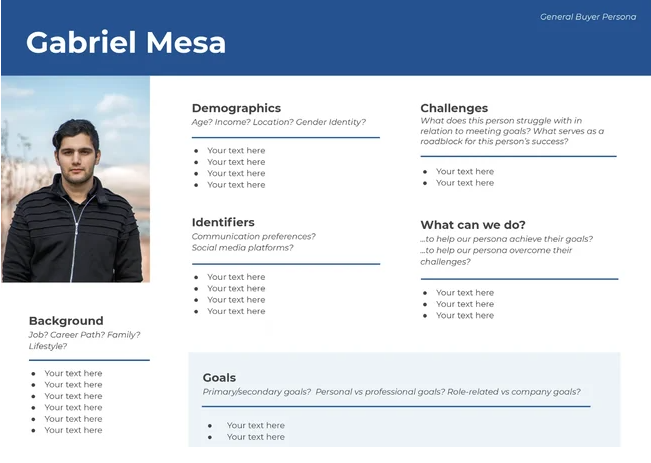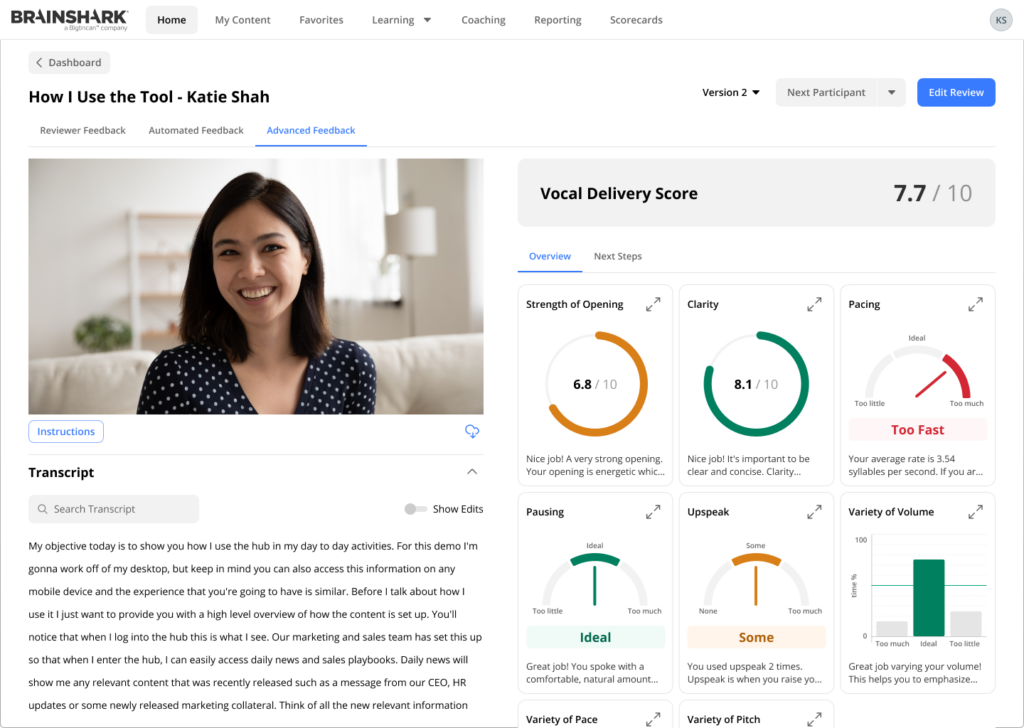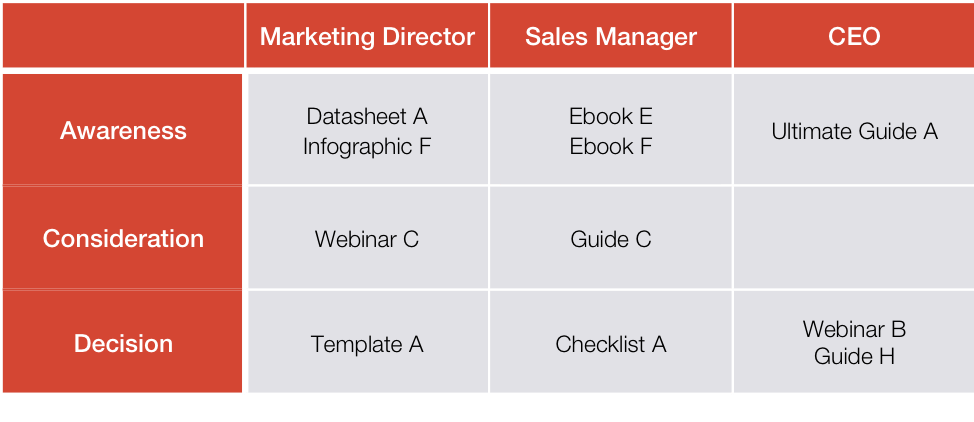Connecting siloed sales and marketing teams is such an old and common problem that it can seem:
- Like one of those things that’s never going away and therefore not worth talking about. Hint: it is.
- Too overwhelming to solve. Hint: it doesn’t have to be.
There are some simple projects you can do to improve your sales and marketing alignment. Here are seven of them, categorized into three key alignment areas for sales and marketing teams.
Alignment area #1: Customers
If there’s one thing sales and marketing team members always agree on, it’s that none of us would be here without our customers.
That’s why customer-focused projects are the perfect place to start aligning your sales and marketing efforts. If you both start from a place of mutual understanding about how best to serve your customers, it’s easy to build out and keep up with workflows that align sales and marketing around your customers’ journey.
Alignment project #1: Create your ideal customer profile and buyer personas
Ideal customer profiles (ICPs) and buyer personas are a way to use both quantitative and qualitative data, respectively, to make educated inferences about your prospective customers and make smart marketing, sales, and product decisions.
*Note that ICP and buyer personas contain different information. Buyer personas are detailed representations of specific target customers, while ideal customer profiles outline the characteristics of the most desirable customers for a business, focusing more on general traits like company size than individual specifics.
Buyer personas help sales and marketing teams get into the heads of their buyers, so they can use the proper messaging and content that will resonate with them. It’s also a great way to get the two teams to work together on a project and exchange their respective knowledge.
How?
The first step in creating your buyer personas is establishing what your key personas are, specific to your business. For example, they could be Marketing Director, Sales Manager, and CEO.
Once you’ve established what your personas are, it’s time to build them out. Creating buyer personas typically requires reviewing historical customer data, online research, and interviewing your customers to gain insight into their goals, habits, and challenges.

Image source: HubSpot
For more in-depth information on creating buyer personas, have a look at this guide to creating buyer personas and download some buyer persona templates.
Alignment project #2: Establish a process for gaining, sharing, and leveraging the latest customer insights
Your entire organization will be more successful if your sales and marketing teams aren’t basing their strategies and content on guesswork alone. Marketers are typically more siloed from customers but crave the information they provide, and sellers are often too focused on reaching their next customers to take time to deliver their insights to marketing.
Establishing a process for regularly gaining, sharing, and leveraging the latest customer insights will keep both teams (and the whole organization) focused on the most relevant customers needs and wishes so everyone is spending their time and effort wisely.
How?
Marketing can take the lead on this one, but make sure to include sales early on so they can share their ideas about how the process should work.
Start with a kick off call or survey to brainstorm, get buy-in, and let everyone know what is coming. Be sure to emphasize how valuable regular customer insights are to the whole company, since you will have to get sellers on board to add extra steps to their routine — especially ones that include logging information (something sellers are famously not the best at).
Next, implement regular communication channels to share customer insights such as your customer relationship management (CRM) software, intranet, and/or regular joint meetings or workshops to gather feedback from frontline sales representatives, analyze data from various touchpoints, and integrate insights into marketing strategies and sales approaches.
During the meetings, teams can analyze the gathered insights to identify patterns, preferences, pain points, and emerging trends among customers.
Conversation intelligence software will also help with the storage and analysis of sales calls by providing insights like call time, who spoke and for how long, keywords that came up and how often, and other information that cuts down on time spent watching entire recordings.
Some easy solutions are to:
- Record sales calls and keep them in a mutually accessible repository for marketing and other interested parties to review on-demand.
- Create a short list of questions marketers would like answered by customers and have sales reps work these into conversations, such as, “How did you find us?”
- Make win/loss reports a mandatory part of the sales process in which sellers share customer feedback such as what challenges they were seeking to solve with your services or products, questions they asked, any objections they presented, why they did or did not buy, why they chose a competitor, and more.
Based on the insights, sales and marketing teams align their strategies to ensure consistency and relevance in messaging, content, targeting, and customer engagement efforts.
Both teams should continuously monitor and evaluate the effectiveness of their strategies based on this real-time customer feedback and adjust their approaches accordingly to optimize results.
Alignment project #3: Define, refine, and coach messaging to use with customers
Nothing is more confusing to a prospect than receiving six different answers to the question “So, what does your product do?” from six different people. Consistency in messaging is key.
One way to combat that pitfall is to use a training and/or coaching tool to ensure everyone is using the same language and telling the same story when writing or speaking to customers.
Sellers can practice messaging, test how it does with customers, and deliver any relevant feedback to marketing to refine messages over time.
How?
Marketers can work with sales enablement and sales managers to create training presentations and messaging pitch assignments for reps to give sales a direct line to the latest product and brand updates from marketing so everyone is speaking the same language.
A more manual approach to coaching messaging is for marketing and/or sales enablement to deliver the updates to sellers in meetings and then have sales managers follow up with individual sellers to hear their practiced pitch and coach them on it. This depends on the availability of sales managers to provide this coaching so it may take some time to make sure every seller has nailed the messaging.
A faster and more automated option is to use a sales coaching and training platform. Sales enablement tools with video and/or AI coaching capabilities allow managers to assign tasks to their team and rate and review their submissions through time-stamped comments and stars.

In this case, submitting a pitch is easy (and probably less awkward) for the sales team. They simply record directly from their device and upload it into the tool. Managers can be notified when submissions are entered, and the salesperson is notified when their submission has been reviewed.
Alignment area #2: Content
Alignment project #4: Set up a process and/or venue where sellers can submit content recommendations and requests to marketing
Sellers need content, marketers create it, and a sloppy, slow, or lack of process for this invaluable exchange sets both teams up for feuding frustrations.
Since introducing the right content to the right customer at the right time is paramount to modern buying journeys, setting up a process and/or venue where sellers can submit content recommendations and requests to marketing is an essential step that will help improve your sales and marketing alignment.
Plus, documenting content recommendations and requests in a more concrete way is a fantastic way to ensure that sales and marketing both know what one another are prioritizing, and that the resulting content benefits both teams and customers the most.
How?
Marketing should create a survey or form in a shared workspace like Wrike, JIRA, or other intranet app, that includes an area for sellers and other respondents to type their suggestions, as well as an area asking why they are requesting that content to help in prioritization for those managing the requests and creating the content.
Tip for marketers: Create a form that isn’t too long or complicated but still includes all of the criteria you need to limit follow-ups with the requester for clarification.
Once you create your form, you need to repeatedly distribute it to the appropriate people and gently enforce adoption of the form. When people try to bypass the form in Slack, email, or other channels, things get lost in translation and you’re back to square one.
It might look something like this:

Alignment project #5: Audit and map your content in a matrix to assess need
Too much content with too little context can devalue any content marketing initiative. In many cases, the marketing team is constantly churning out content, but the sales team doesn’t know what is there, why it was created, or which content to send to which customers.
One way to improve your teams’ alignment around content is to conduct an audit and organize all your existing content into a content matrix.
This audit should be led by marketing and/or sales enablement with the assistance of sales so you collect as much of your existing content that’s made its way into the ether as possible. The matrix should then be consistently updated on a quarterly basis (or as often as possible) and made available for the sales team to view.
How?
Start with a basic matrix, like the one below, that includes your key personas and buying stages (awareness, consideration, and decision is a good place to start).

Once you’ve mapped your content, take a look and determine where your gaps are. You’ll be able to determine which opportunities and sales stages don’t have relevant content that a salesperson can use to move the deal forward.
This will likely become a bit unwieldy for large enterprise teams, rapidly growing companies, or more prolific content creators, at which time you should consider a content management system other than Google Drive or SharePoint.
Alignment project #6: Create editable templates for your sales team
Templates for common types of content your team uses with editing controls encourages content usage by sales teams, while also ensuring branding and regulatory/legal control.
Decks, datasheets, and other content delivered to prospects and customers is personalized, editing is quick and easy for busy sellers, and marketing still holds the reins. Everybody wins!
How?
Using Google Slides and Docs templates or a document automation tool are the simplest ways to create editable templates. Just be aware that Google templates will limit what types of content templates you can create as well as how sophisticated they are in terms of branding and other visual elements.
For enterprise sales and marketing teams, a document automation tool is preferable and scalable. A document automation tool lets marketers build templates, import assets, and define content areas as either fully editable, swappable, or restricted for an even finer degree of control over branded content.
Alignment area #3: Social media
Alignment project #7: Implement an employee social advocacy initiative
Growing your company’s social presence is another important initiative sales and marketing can partner on.
It opens your sales team up to do more social selling and it’s a great way for marketing to distribute content and messaging on social media without relying solely on the brand page (which fewer people are interested in).
How?
There are more and less manual ways to achieve this depending on your budget and other resources. If you need to start with a manual process, your social media, community, and/or content marketers can type and distribute copy and pasteable messages and links to articles, news releases, awards, webinar registration pages, and more via email, Slack, or other internal communication channels at a feasible frequency.
The recommended and preferable option is to implement an employee social advocacy platform that automates, speeds up, and improves the process described above. With an advocacy platform, you will also get performance data on employee posts showing you how many people you’re collectively reaching and which posts get the most engagement.
